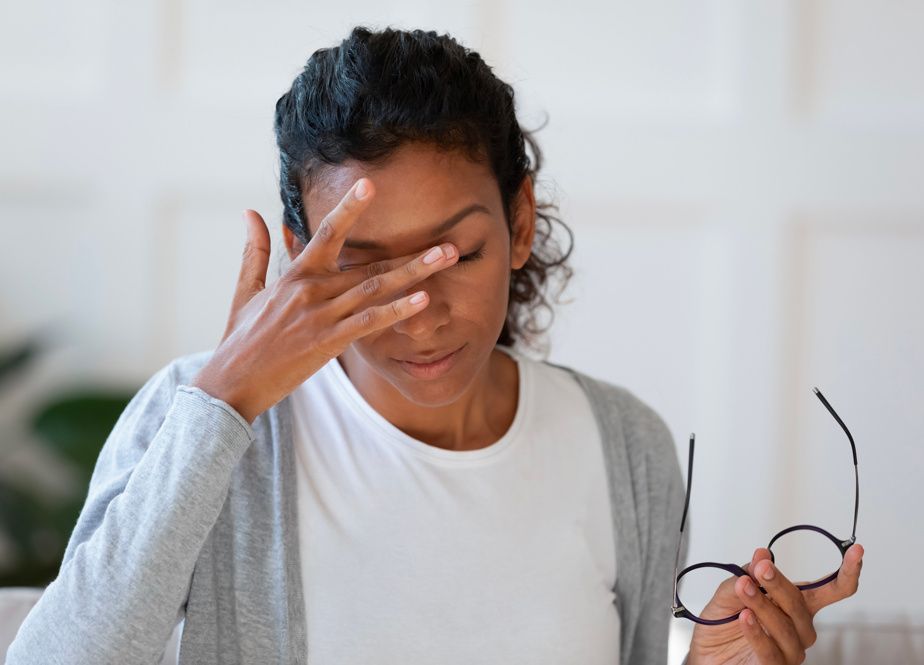Approximately 21% of Canadians suffer from dry eye, a condition that remains without a cure. The good news is that people who have been diagnosed with dry eye now have more options to manage it and prevent permanent damage to the surface of the eye.
Published at 7:30 a.m.
XTRA is a section that brings together promotional content produced by or for advertisers.
What is dry eye?
“This disease is the result of poor lubrication of the surface of the eye, and several factors can contribute to its development and progression. Some patients may not produce enough tears, or their tears evaporate too quickly to effectively lubricate the eye; others have poor tear quality,” explains Dr.re Clara Chan, associate professor of ophthalmology at the University of Toronto and president of the Canadian Society of Cornea, External Disease and Refractive Surgery.
All of these factors can lead to increased inflammation on the surface of the eye, tears containing excess salt, as well as damage to eye structures.
Are you at risk?
“Women and older people are most at risk, especially those experiencing hormonal changes,” adds the expert. “People with certain immune system disorders, diabetes or thyroid disease are also at greater risk.”
Other risk factors to watch for include contact lens wear, previous eye surgery, and exposure to smoke, wind, and dry climates. Finally, certain medications—such as antihistamines, blood pressure medications, and antidepressants—can also reduce tear production and lead to dry eyes.

How does this problem manifest itself in everyday life? The most common symptoms are eye pain, burning sensation, sensitivity to light, feeling of having a foreign body in the eye, discomfort and/or intermittent blurred vision. If you notice watering eyes when there is wind, after reading or when you are exposed to a draft (such as a vent), you may have dry eyes.
The biggest culprit in worsening dry eye is screen time. Every time we use screens or perform sustained tasks like driving, our blink rate decreases significantly. And blinking is essential to properly lubricate the surface of the eye.
Dre Clara Chan
A very simple exercise
Practice the “20-20-20” rule: Every 20 minutes, close your eyes a few times, then look into the distance (about 20 feet, or 6 meters) for 20 seconds.
How to relieve dry eyes?
While there are different treatment options to relieve dry eye, depending on its severity, there is no universal treatment. “Often, the first step is to change your lifestyle habits,” summarizes Dr.re Chan: Consider using a humidifier, blinking more frequently — including during screen time — or wearing protective eyewear in windy or dry environments.
Artificial tears work well for mild forms of the disease. However, many patients already have moderate to severe dry eye when they see an eye care professional, requiring enhanced therapy.

Among the therapeutic solutions offered, anti-inflammatory eye drops, especially those formulated with the anti-inflammatory agent cyclosporine, help increase tear production and reduce inflammation. The active ingredient in cyclosporine is usually combined with a lubricant when instilled from a bottle, and the most recent formulations are even combined with new nanomicelle technology.
“Some patients may also require topical nutritional supplements or in-office procedures, such as eyelid margin exfoliation, thermal pulse treatments, or intense pulsed laser light,” says the healthcare professional.
Signs that are best not to be ignored
“Often, by the time patients have symptoms and are referred to an ophthalmologist, the disease is quite advanced and difficult to treat,” warns Dr.re Chan. That’s why it’s essential that patients attend routine checkups with their optometrist, who can spot signs of dry eye early, even if they don’t have any symptoms.
The average annual costs of dry eye are approximately $24,300 per patient. Indirect costs, such as unemployment, work absenteeism, and presenteeism, all increase with disease severity.
* This article was made possible by the financial support of Sun Pharma Canada Inc.









